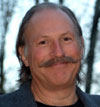In a way, it all started with the ancient Greeks, who hated the notion of a vacuum. Their argument was semantic and came from their passion for logic. How could there be a vacuum, they reasoned, when “be” and “vacuum” contradict each other? It would be nonsense to believe in the existence of nothing.
In the 1960s, we assumed those silly Greeks had overthought the issue. Of course you can create a vacuum. Just evacuate all the air out of a bell jar, every last molecule, and voilà! Our university’s best laboratory vacuums left a few atoms in place, but so what?
Turns out, the Greeks were right. First, no matter how cold and perfect the vacuum, it’s still penetrated by infrared heat from the container’s walls. Similarly, microwaves left over from the toasty Big Bang permeate the vacuum of space. Because energy and mass are equivalent, those waves zipping through all of space mean you can’t ever have a true vacuum.
But that’s technical nit-picking compared to the real antinothingness news. German physicist Werner Heisenberg’s uncertainty principle, published in 1927, claims a perfect vacuum can’t exist. At the time, other theorists argued empty space ought to contain a weird sort of energy.
Physicists now believe this underlying “quantum foam” is more than merely omnipresent: Its power is enormous. Estimates of the energy in each small bit of seemingly empty space vary greatly. It’s likely the space inside a mayonnaise jar contains enough power to boil away the Pacific Ocean instantly.
Wait a second. I’m from Missouri. You’ll have to prove this to me.
Okay, how about the Casimir effect? It was named for Dutch physicist Hendrik Casimir, who made an odd prediction in 1948. He said if you hang two flat metal plates very close to each other, you’d limit the vacuum power between the plates because energy waves need elbow room. That’s why ocean waves don’t exist in sheltered coves, and why your eyes don’t boil while you stare into the microwave oven: Microwaves are too big to fit through those little holes in the screen. So the narrow gap between the plates restricts the wavelengths available for virtual particles. But the quantum energy outside the two plates is as strong as ever, and it pushes them together.
Well, this truly happens. The Casimir effect is real. Hang two plates apart by 100 times the width of an atom, and they’re pressed together with a force of 15 pounds per square inch. Move them twice as close together, and the force increases 16-fold.
Some dreamers want to exploit the vacuum energy to give the world unlimited free power. Power from nothing. But there’s a problem. This energy exists everywhere equally — which is why we don’t sense it or detect it. Energy flows only from a place of greater energy to a place of lesser energy, just as heat moves only to where there’s less of it. So how would you set up a condition that had less energy than that which is everywhere? How could you make it come to you?
The closest we get is when we chill matter to absolute zero at –459.67° Fahrenheit (–273.15° Celsius), where all molecular motion grinds to a halt. Then and only then are things at parity with this all-pervasive power. Hence, it’s also known as zero-point energy.
There’s evidence that this hidden geyser shows itself at that point. Helium couldn’t still be liquid at absolute zero if it weren’t receiving a bit of energy that keeps it from freezing solid.
So zero-point energy makes itself present when all other energy is absent. To get this limitless quantum-foam energy to flow to you, you’d have to create below-absolute-zero conditions. This means making atoms move slower than “stopped.”
Slower than stopped? The Greeks surely would be scratching their heads over that one. Solve it, and the power of the universe is yours.










